

Suunto Blog
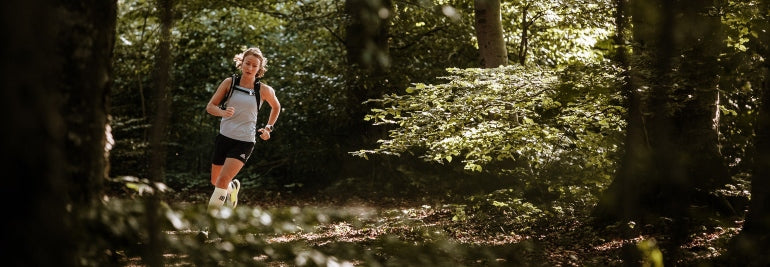
Join the #HomeTeamHero relay now and make your workouts matter
As a salute to all the frontline community heroes who have kept services running throughout the COVID-19 pandemic, Adidas Running has launched a donation relay to support relief efforts.
From May 29 - June 7, for every hour you exercise, regardless of sport, Adidas Running is giving $1USD to the WHO COVID-19 Solidarity Response fund. The goal of the #HomeTeamHero challenge is to inspire one million workout hours, raising one million US dollars!
All you need to do is connect your Suunto app and Adidas Running accounts, join the challenge, record your next workout with your Suunto watch and, boom, your activity is automatically synced with your Adidas Running account and your time and sweat will support the WHO’s COVID-19 relief efforts. Who needs more motivation than that?
Join the #HomeTeamHero donation relay!
All the latest Suunto watches – the 3, 5, 7 and 9 – are now compatible with the Adidas Running app (formerly called Runtastic). Adidas Running is a passionate community, and offers regular challenges, tips on how to train and tools to follow your training and progress. There is both a free version of the app, and a premium membership with extra benefits.
To sync with Adidas Running, go to your Profile in Suunto App and select Connect to other services. Select Adidas Running and connect your account. All your new workouts will then automatically flow to Adidas Running.
To show the endurance power of Suunto users and to represent, you can also join the Suunto group in the Adidas Running app. Let’s show them how we do it!
All images: © Thomas Marzusch, Kreativ-Instinkt
Read more articles
Blaze fresh routes with Suunto Heatmaps
The benefits of training to music and making your best playlist
How to adapt your training when the unexpected strikes
How to improve your walking technique
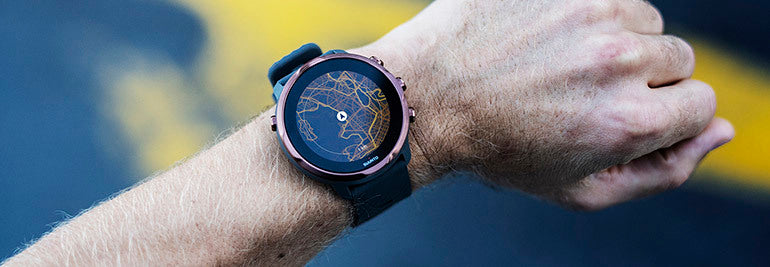
Blaze Fresh Routes with Heatmaps
Rather than follow the herd, with Suunto Heatmaps you can find places where the crowd doesn't train. Then paint the town red and yellow with your own training glow. Whether you're looking for running, cycling, swimming or hiking routes, Heatmaps shows where the hotspots are, and where there's space for you to stay safe and keep your distance.
View Heatmaps on Suunto app and offline with Suunto 7
Based on millions of workouts, Heatmaps show where the Suunto community loves to train across the planet. Discover new training routes in your own neighborhood, find the popular local spots when you are somewhere new or – to stay safe and keep your distance – avoid the much-travelled trails.
To view activity specific Heatmaps and to plan routes go to the map view of your Suunto app and select the desired Heatmap layer. If you don’t have Suunto app yet, get it from the App Store or Google Play and start exploring.
On a Suunto 7 you have easy, offline access to both Heatmaps and detailed terrain maps when you're exercising outdoors. You can see your track on the map, use Heatmaps to explore new routes, or follow your track back to where you started from.
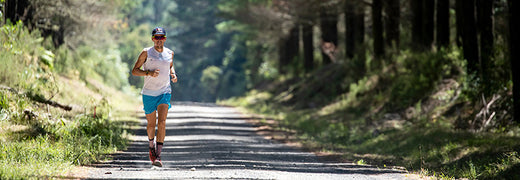
Which nation runs the fastest? 10 fun facts from 2019
Suunto app saves millions of workouts every year, creating a veritable treasure trove of training data. When our data team crunches that mountain of numbers – while respecting personal privacy laws, of course – they discover some surprising sport insights.
Our data nerds have just finished calculating the 2019 workout stats generated by users in nations across the world. Continuing the age old tradition of friendly international sport rivalry, we looked at which nation is the fastest, which nations runs for the longest distance, as well as other stats. We’re sure you’ll find the results as interesting as we do.
Flat and fast: Denmark sets the pace
According to our analysis of all the workouts in 2019, runners in Denmark are lightning. The average pace of our Suunto-wearing Danes is 5:11 min/km! Whoop! That’s quick.
Perhaps it’s not surprising given a 2017 Eurostat survey found Denmark, a nation of 5.6 million, exercises more than all other EU nations, apart from Suunto’s own Finland. Apparently exercise, whether cycling the small nation’s famous bicycle path network or running along its gorgeous coastline, is a core element of Denmark’s culture. Respect!
Click here for tips on how to improve your running economy!
The long run: Portugal goes the distance
Portugal, a nation of 10.3 million, likes to run! Our data shows people in Portugal ran the longest average running distance – 10.3 km/run. It’s the only nation to break the 10 km average distance mark. Bem feito!
Click here for tips on running the distance!
Sleep tight: who sleeps the most/least?
Analyzing all the sleep data proved an interesting exercise. People in Chile, Finland, New Zealand and Ireland enjoy a good night’s sleep; on average they get more than seven hours a night.
Conversely, people living in Asia, including Indonesia, Malaysia, Thailand and South Korea, seem to like burning the candle at both ends; on average they get less than 5.5 hours a night. We hope they’re getting enough recovery time!
Click to read how sleep can make you a better runner!
Feeling great: the most common feeling vibe
It seems like Suunto users are positive bunch – must be all that outdoor exercise. We checked what is the most common feeling recorded after all the workouts, and we discovered “excellent” came out on top. That’s a really good sign. Feelings are a great way to keep track of how your training is going, and to monitor whether you might need to rest more.
Magnifique: the French LOVE trail running
When comparing their trail running to treadmill workouts, the ratio in France is 12.9:1, almost 13 times more trail than treadmill. In the US, by comparison, the ratio was 1.6:1, and in Spain 4.8:1. We’d love to know what causes this big difference!
Around the clock: trail runners move for the longest
Respect to all the trail runners out there. It’s the most popular activity for 12+ hour long activities. That’s a solid length of time to be on your feet moving. We hope you are fueling and hydrating well.
Read to learn how to transition from road to trail running!
By foot wins: running and walking the most popular
Running came out as the most popular activity among Suunto users, followed by walking, and cycling in third place.
Sport lovers: Suunto fans enjoy four activities
On average Suunto users did 4.3 different activities during the year. But some were much more varied; one user tracked 74 different activity types, another one did 72! That’s an impressive performance! We wonder how they found the time!
Go guys! Men walk more
Out analysis shows male Suunto users walk a little more than women. Men walk on average 9446 steps a day, and women 7969. Ladies, show them next year!
Lead images: © Graeme Murray / Red Bull Content Pool
Read more articles:
7 tips for running in the dark
Hunter or the hunted? 7 race tactics for the trophy
Fuelling the engine: 6 principles of nutrition for athletes
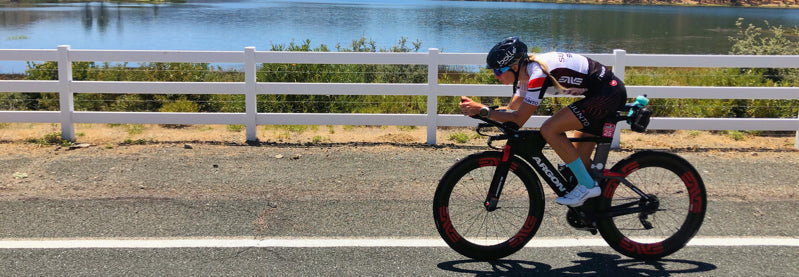
One triathlete’s journey through hell and back to the Kona start line
Doctors told her she would never run or race again. Kelsey, then 31, was lying in a hospital bed, her body battered and bruised after a truck hit her, and her vision for her life in ruins. She decided to prove the doctors wrong.
After recovering from the accident Kelsey drove herself hard. She refused to give up. While the determination was admirable, she now admits it bordered on reckless.
“I spent the next year trying to come back, but was plagued with more injuries and frustration,” Kelsey explains. “I gained a lot of weight and fell into a depression where I coped by going out at night, drinking way too much, and just not really living life as a pro athlete.”
Kelsey began swimming competitively when she was six years old. Later at college, she competed in Division 1 before moving to the Olympic Training Center in Colorado Springs as a member of the USA Triathlon National Team. She completed her first triathlon as a senior high school student in 2001, and was hooked.
With her life in tailspin after the accident, Kelsey got close to quitting triathlon. But then she met Mike, her now coach and boyfriend, who helped her turn everything around.
“The new path I chose to go down was life changing, but not easy,” she says. “Mike got me healthy for the first time years. But when I did decide to start racing again, I was in for a rude awakening. I moved up from ITU (International Triathlon Union races) to the 70.3 distance and finished dead last in most of those races.”
She was going in the right direction. But some old bad habits were holding her back. Eventually Mike gave her an ultimatum: get a job and make triathlon a hobby or commit 100% and make triathlon her job. “It took a good week for me to decide to go ‘all in’, but when I did, everything switched for me,” she says.
The decision empowered her; in 2017 she won her first Ironman 70.3 at Victoria, then backed that up with a win at Ironman 70.3 Manta the following weekend. She has been on the podium at almost every race since, securing her first Kona slot this year at age 36.
“This just goes to show you that if you work really hard and don’t give up, amazing things can happen!” she says.
Kelsey takes over our our Instagram stories this weekend. Follow along as she prepares for Kona!
READ ALSO
How (not) to qualify for Kona
Road to Kona: Cody Beals' clear race strategy
Road to Kona: 5 tips to train effectively as a couple

Fuelling the engine: 6 principles of nutrition for athletes
When she's not in the mountains, you can find Emelie Forsberg in her garden or preparing delicious meals. © Matti Bernitz
How and what we eat is personal to each one of us. Some of us feel better and more energised by certain foods, while others feel quite differently. Regardless of our personal view, one thing we all have in common is that eating well is essential for top performance.
In our recent article series “Fuelling the engine” we heard from eight athletes and trainers about how they stay fuelled (see the end for the article list). What’s more interesting than their differences, is what they have in common. We’ve combed through and put together six basic principles of nutrition for athletes.
Find your rhythm
Suunto HQ is lucky to have in-house personal trainer and athlete Matias Anthoni walking around the office. He offers training and nutrition advice to whoever is interested. He says improving how often you eat can improve what you eat. Skipping meals is a no-no for dedicated athletes because it causes energy crashes and bad dietary decisions, which result in poor performance. He advises to get into a rhythm of having a healthy meal every three hours.
Get organized
To eat six or more well balanced meals a day demands forward planning. It’s pretty hard, if not impossible, to maintain this if you’re operating on a day-to-day basis. Ryan Sandes, Emelie Forsberg, Mel Hauschildt and Lucy Bartholomew all emphasised the importance of being well organised and planning ahead. They sometimes make extra portions of meals at the beginning of the week to have later in the week when they know they will be busy. Being organised means making sure there are plenty of easy, go-to meal ingredients available, too.
Balanced meals
There are a number of different aspects to having a balanced diet. Ultracycling man Omar di Felice sees it as maintaining a proper balance of carbohydrates, protein and fat, with fatty food being essential for his epic extreme rides above the Arctic Circle every winter. This balance of carbohydrates, protein and fat is what nutrition expert Dr. Rick Kattouf II also drills into his clients. He believes every meal – for dedicated athletes in training – should include this ratio: 50 to 60 % carbohydrates, 15 to 25 % protein, and 15 to 25 % fat. Balance also means eating a variety of foods to make sure you are taking in enough minerals and vitamins. Ski mountaineer Greg Hill tries to have a balance of colors in his meals.
Fresh is best
One thing that came through loud and clear from all our athletes and experts is the importance of eating fresh foods. For Emelie Forsberg and Lucy Bartholomew this means preferably straight out of the earth. As an avid gardener and farmer, Emelie grows and harvests much of what she eats. Lucy, ski mountaineer Greg Hill, Mel and Ryan all try to avoid eating packaged foods, instead choosing foods that are as close to the source of production as possible.
Whole is the goal
Should go without saying: avoid processed food and food with refined sugar. Instead, all our athletes opt for whole foods. Ryan Sandes questioned the idea that recovery shakes could ever replace the nutritional value of whole food. Don't take shortcuts; take the time to eat well. It’s self kindness.
Enjoy yourself
Emelie, Ryan and Greg all said they don’t get uptight about food. Emelie has a relaxed and intuitive approach to food, and Ryan and Greg are happy to allow themselves to enjoy a pizza or a burger each week. Greg cautions not to try to be perfect; aim to make the bulk of what you eat fresh and healthy. “It’s important to enjoy life as well,” Ryan says.
Click below to read articles in our Fuelling the Engine series:
Fuelling the engine: talking nutrition with Lucy Bartholomew
Fuelling the engine: talking nutrition with Emelie Forsberg
Fuelling the engine: a commonsense approach to nutrition
Fuelling the engine: talking nutrition with Ryan Sandes
Fuelling the engine: talking nutrition with Ultracycling Man
Fuelling the engine: talking nutrition with Mel Hauschildt
D.I.E.T (disaster imminent every time), and three unchanging principles of nutrition for athletes
Fuelling the engine: talking nutrition with Greg Hill
Lead images:
Photo by ja ma on Unsplash
© Craig Kolesky / Red Bull Content Pool
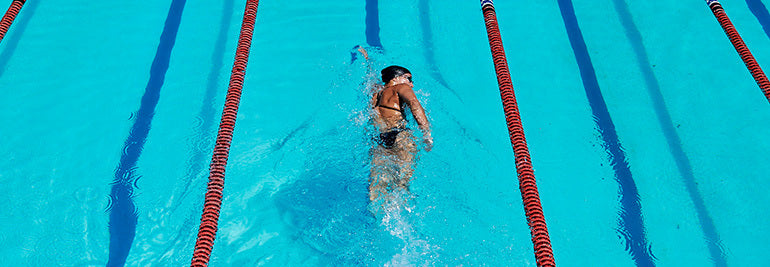
7 principles to help you find the flow
If there’s one way to get athletes talking, it’s to ask them about their flow experiences. They sit up, smile, and recall incredibly vivid experiences they will cherish for the rest of the lives. In many ways, flow states are the big reward that keep us going. Kind of like the panoramic view at the top of a mountain that makes the arduous climb worthwhile.
Flow states are a basic human potential. They are available to all of us, not only elite athletes, musicians and artists. With a little knowledge, dedication and practice, we can increase the likelihood of having a flow state experience.
According to mental coach Markus Arvaja, flow states are thoroughly immersive experiences. In his work with top ice hockey, football and tennis players, he tries to put in place the conditions that make flow states, when performance becomes almost effortless, more likely. Markus is a certified sports psychology consultant and senior lecturer in coaching at Finland’s Haaga-Helia University of Applied Sciences.
Click here to read our article explaining the science flow states!
No challenge, no flow
“First,” Markus says, “you need to have a feeling of being challenged, but that you have the competency and self confidence to handle it.” It’s a delicate balance. If the challenge is too great, and you feel out of your depth, lacking the skills for an activity, then it’s unlikely you will experience a flow state. There’s simply too much mental activity happening.
On the other hand, if the task is too easy, and the challenge is too low, then you are likely to be bored, also making flow state unlikely. The sweet spot is somewhere in the middle. So consider what might be a reasonable challenge for you, one that you feel confident in your skills and ability to take on.
Feel positive
The next essential condition for flow state experiences is motivation. “It helps if you can achieve your optimal arousal,” Markus explains. “You need to feel that you are really into the activity.” There’s another balance here. One extreme is boredom, the other is being too excited, almost nervous with anticipation. In the middle is relaxed enthusiasm. One way to achieve this is to remember the reasons you love your sport, what it gives you, a few minutes before you perform. Or maybe listening to music motivates you.
Automate the skill set
The reason top athletes and musicians experience flow is because they have put in the countless hours necessary to master their chosen activities. Whatever your sport, you need to have automated the skills required to experience flow. The action should come naturally from the body without any need for thinking or assesment. “If you don’t trust your technique, it’s hard to achieve the flow,” Markus says. “It’s important you train so much that you are well prepared and can get let go and let it happen. The moment you start to think too much, it’s hard to be in the flow.”
One thought at a time
Did we mention that thinking too much might obstruct a flow state? In the mindfulness movement, teachers talk about the “monkey mind”. Like we often jump from one thought to another, a monkey jumps from branch to branch incessantly. Constant thinking is tiring and distracting. “One good thing to do is to shift your focus to the activity at hand,” Markus says. “For example, if you are a tennis player, you could totally concentrate on moving your feet. It helps to concentrate on one or two things only. If you can do that, you might start to notice the flow. Just play the game and enjoy!”
Have a plan
Having a plan is very helpful, Markus says. For example, if you’re going to run a trail race, the plan might include having your own guidelines for pace, fuelling and heart rate. Well before the race, you might study the course, even train on it to get familiar, so on race day you know when to push and when to take it easy. “Make a plan at home,” Markus says. “That’s what we do in team sports. The less you think on the day, the better you perform.”
Practice mindfulness
“Mindfulness certainly helps,” Markus says. “If your mind is free of worry, and unnecessary thoughts, you can stay in the present moment. It’s good to learn to quiet the mind, to turn off the inner critic. Learn to simplify and focus on one thing.”
Play!
Yes, it’s important to have goals, to have a plan, to automate skills, and to be motivated. But if we get too serious, we risk getting too severe with ourselves and then the sport we once loved can feel like a strain. “Just play!” Markus always tells his clients. “It helps when you are positive and having fun. You can’t force the flow!”










































































